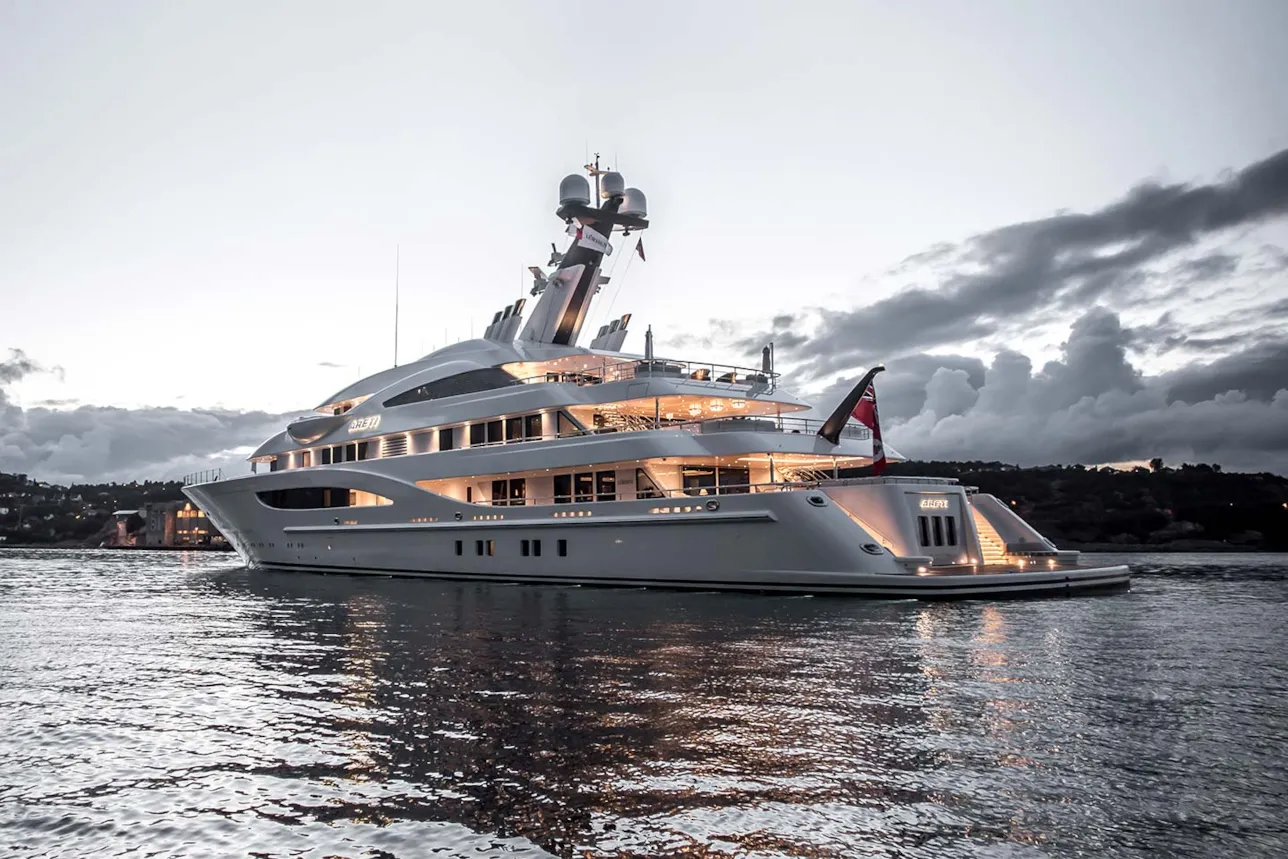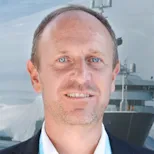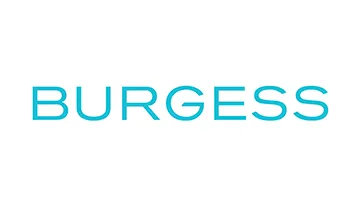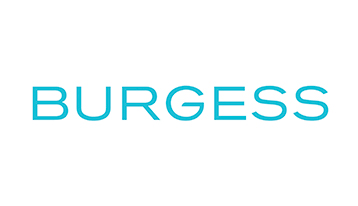

Balancing expectations in yacht management and newbuilding projects
Improving risk management is of key interest for yacht owners and class can support to go beyond today’s standards. Flexibility and smart tools shall make sure that processes become more effective and efficient. Burgess, one of the leading superyacht brokerage houses, shares thoughts on today’s challenges and how class is embedded in their work.
Featuring in this interview

Guy Huybrechts, Burgess Monaco

Guy Huybrechts is a qualified unlimited Master Mariner and joined Burgess as Head of Yacht Management, Monaco, following an extensive maritime career both at sea on board yachts, passenger ships and cargo vessels, and ashore.

Sean Bianchi, Burgess London

Sean Bianchi is a chartered naval architect specialising in hydrodynamics in Burgess New Construction. Sean has been involved in the project management of a number of significant new construction yachts.
What is the most challenging aspect of yacht management?

Balancing everybody’s expectations. There are a huge number of stakeholders: the owner, the captain, the financial director as well as port state control or the class society. The challenge is to align their expectations. Most owners take it for granted that their boat is classed, with everything working, but there is a vast amount of work behind the scenes. Ideally, they should only need to experience the tip of the iceberg – the service on board and enjoying their time on “the product”, not the fine day-to-day details. Of course, some owners are super interested, and we do provide weekly or monthly reports, perhaps notifying them that a class survey is due or giving them a heads-up on maintenance, docking surveys and intermediate surveys, all of which take time out of the boat’s cruising schedule. If a yacht is classed it is very important, if only for resale value, to keep it up to date, using class experts, and giving peace of mind to owners.

How do you see the market developing as you look ahead?

In 2019 DNV GL hosted a seminar in the Yacht Club de Monaco. One of the talks by DNV GL’s expert Mark Kruidenier was about the Direct Access to Technical Experts (DATE) system, where you submit your inquiries and questions online and they get back to you quickly. This is very interesting and could evolve further. Also remote survey support where, as an operator, we may have one or two small items outstanding after a survey and the boat is roaming around – now we can provide objective evidence by photos or reports which can be uploaded to their system so we can close these issues and save travel time and cost for owners. There is nothing worse than changing an itinerary to wrap up something that could be achieved by a simple picture. There is an element of trust there but as yacht managers we make sure it is done properly so the vessel remains classed.

What are the industry’s ambitions for the future?

We need to keep developing. IMO and other organizations are creating rules but sometimes the industry must look at existing rules and see how we can do it better, easier and faster. In the maritime industry the biggest challenge in the next ten years will be to get rid of as much paperwork as possible. We are looking at tests with digital logbooks. The superyacht industry is in some ways lagging behind as software is quite expensive, so the class society could help by developing a general-use management system for merchant ship owners that can also be used by the smaller yacht operators. We need to try to work smarter, not harder! You can’t expect the crew to handle more and more red tape.

What is important for your customers today?

Yacht owners and operators want quality and they want the class society to provide benefits by increasing reliability and safety. I would say DNV GL provides these benefits to its customers. All the surveyors I have worked with so far, in France, the Netherlands and Miami, have been very professional. I believe DNV GL’s internal training scheme for surveyors is excellent . Professional yacht crew are not offended to have their work and on-board systems checked by professional external experts – after all, crew need to feel secure in their “home”.

How do you expect customer preferences to change in the future?

Owners want risk management to keep improving. A superyacht is very expensive already and at the end of the day the worst thing that can happen is that you spend millions running a superyacht and then, when the owner or charterer is finally on board, you have downtime, off-hire or disruption. Class societies should help and challenge us at the same time, but also have to be flexible and plan for such situations, managing risk, with duplication of some machinery for example – you don’t want to stop the boat for a small defect.

How important is class in operation?

It is part of setting the standards, managing risk and optimizing refit periods. When planning a big refit, for example, it is very important for owners to have an opening meeting on day one, inviting class to come along with the shipyard managers and senior officers so there is a clear overview of what class expects. In shipping the key is planning, so if the class surveyor is invited proactively to attend, then he or she can convey their requirements and their concerns and you can plan for these. One good point with DNV GL is its global presence in all the yachting hubs. Another good idea with class societies nowadays is that they involve yacht managers and yacht crew in training programmes and workshops, with Q&A sessions where captains or crew, who might be too proud to request information via normal channels, can informally question class experts. Overall it is important that all stakeholders keep communicating.

How do you handle customer expectations when it comes to newbuildings?

The Burgess New Construction team do their best to assist an owner in developing their requests and requirements into a newbuilding. We will always try to accommodate their wishes and will review these from a rules and regulations perspective, including safety and practicality. Depending on the expectations of an owner this may simply be incorporating the relevant requirement into the technical specification or general arrangement plan. If the requirement is more “unique” we can undertake a feasibility study for the client, and we can involve class and flag state as well as the selected shipyard in this study. It is quite common for us to involve class and flag in these discussions prior to contract signature so that we can present a very clear overview to a client as to whether his request is feasible and can be realized in the newbuilding project. The key to managing customers’ expectations is to be able to provide a clear, knowledgeable, well-considered and honest view in each case. In the event that a requirement may not be totally realistic we will always attempt to assist in developing or redefining the expectation to bring the owner’s request as close as possible to a sensible solution .

Which stakeholders are involved in the newbuilding process?

Each new construction project is unique in its own right and as such the stakeholders can vary. The main stakeholders start with the owner and his family. An owner’s representative is an important key player in the project and can be an associate of the owner or part of the new construction technical team. Burgess New Construction tends to assist owners as their representative, ensuring that we bring our vast knowledge and experience to the project in favour of the owner and his new yacht. It is important for the owner to engage with an experienced marine legal team to assist with contract development. Dependent on the project and shipyard it is normal for an owner to engage with an interior and/or exterior designer. During the building process the owner will need a specialist technical team to assist in the design development of the project. It is common practice for the Burgess New Construction team to review the structural, outfitting and system drawings on behalf of the owner to ensure that the relevant rules and regulations are followed, and that operation, future-proofing and servicing/maintenance are optimized post-delivery. The team would normally manage the process on behalf of the owner and introduce a permanent on-site team to the shipyard upon steel construction. Burgess can also assist in introducing senior crew to the project to ensure they understand how the vessel is designed and constructed. They will assist in the harbour and sea acceptance trials, ensuring a seamless transfer from in-build to operation post-delivery. Third-party consultants are also utilized throughout the build process and it is not uncommon to introduce coating, electronics and security consultants.

How do you perceive the importance of class during the newbuilding process?

Class is an important and vital part of each new construction project. Burgess New Construction always advises owners to construct a vessel to the appropriate rules and regulations. Burgess relies heavily on the assistance of class and flag throughout the building process to ensure that the shipyard complies with the requirements of the rules, but also to assist in reviewing any bespoke systems that may not have been considered previously. We appreciate the involvement of class and flag when undertaking feasibility studies and hazard identification studies. Having an experienced and practical on-site class surveyor monitoring the newbuilding is also important, as they work in unison with the Burgess New Construction inspectors to ensure that the vessel is constructed to the shipyard’s highest standards.
